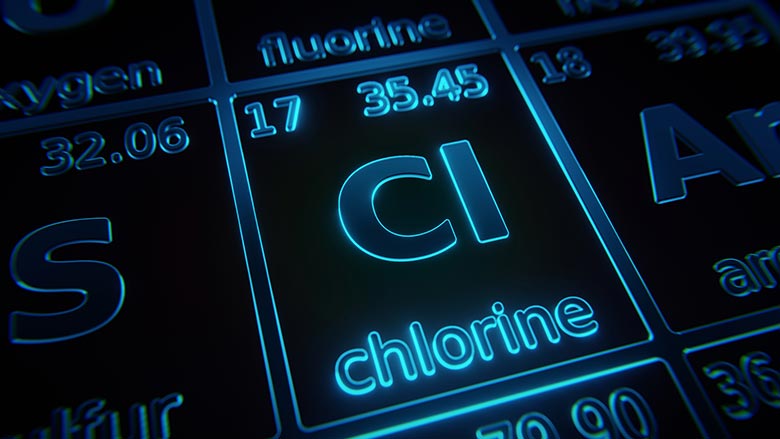Many of the topics I have discussed in my column to this point have been about temperature considerations within the supply and return system based on recommendations in the community and right-sizing domestic water piping to reduce the overall volume of water in the building’s piping system. We’ve even discussed increasing intelligence to commercial plumbing systems to improve water management programs and reduce liability concerns. And all this writing is for what? To reduce the risk of legionella bacteria developing in the domestic water system.
These topics fall under what I call the “must-considers” of plumbing engineering responsibilities. They might not be in line with a code minimum requirement, but as an engineering community, we have a responsibility to uphold the health and safety of the public. And as these topics can be applied most every building type, they must be considered for every building a plumbing engineer will design.
What I have yet to discuss is what specialty components we have at our disposal to even further reduce the risk of legionella bacteria gaining a foothold in the domestic water system.
There will be a series of topics forthcoming on what chemical and non-chemical additives, tools and technologies plumbing engineers can consider as “add-ons” in their design practice, and when to implement them.
In this article, we will look at chemical and non-chemical additives for legionella control. These are items that are directly added/mixed with the potable water in the piping network.
Before we delve into the water additives available, engineers must understand that the Environmental Protections Agency (EPA) plays a very significant role in regulating these systems. They state:
- Adding certain water treatment technologies in a premise plumbing system could impact the chemical and microbial quality of the water and change the regulatory status of the premise plumbing system. The criteria for being a regulated PWS are provided at 40 CFR 141.3;
- Facility owners or operators who are considering adding treatment to their building’s premise plumbing system may wish to consult with their water supplier (i.e., PWS) to better understand any potential water quality issues before making treatment-related decisions; and
- In addition to the drinking water regulations under SDWA, manufacturers of pesticidal treatment technologies used to control Legionella and other microbial contaminants need to comply with the Federal Insecticide, Fungicide and Rodenticide Act (FIFRA) requirements, which are independent of the SDWA requirements.
As plumbing engineers, we cannot pretend to be experts in chemistry, which makes being experts in these systems very challenging. It is very prudent in these cases to leave it to the experts.
The full resource from the EPA can be found here. Much of the information below comes from the EPA’s document, and the many studies included in developing its document. As plumbing engineers, we cannot pretend to be experts in chemistry, which makes being experts in these systems very challenging. It is very prudent in these cases to leave it to the experts, and the excerpts below are to provide a high-level overview of the systems and some design considerations. I advise that the paper published by the EPA is read in full context for anyone seriously looking to include any system mentioned below in their design.
Another excellent resource soon to hit the market will be ASPE’s Design Methodology to reduce Rick of Legionella, of which I am a working group member. And now, on to the discussion….
Chemical chlorine or “free chlorine?”
Chlorine was first used in the U.S. as a primary disinfectant of drinking water in Jersey City, New Jersey, in 1908. Chlorine is added to drinking water as elemental chlorine (chlorine gas), sodium hypochlorite solution or dry calcium hypochlorite. Sodium hypochlorite is the species of chlorine most used by public water services.
For chlorine to be effective against microorganisms, it must be present in sufficient concentration, and must have adequate time to react. For continued protection against potentially harmful organisms in distribution systems or premise plumbing systems, some level of chlorine needs to be maintained after the initial application. The remaining chlorine is known as residual chlorine.
The efficacy of chlorination is affected by many factors, including chlorine concentration, contact time, pH, temperature, turbidity, buffering capacity of the water, concentration of organic matter, iron and the number and types of microorganisms in the water system (in biofilms and free-living). The anti-microbial efficacy of chlorine declines as pH increases >7, with significant loss of efficacy at pH >8. Free chlorine is degraded rapidly at elevated water temperatures, which is a concern for hot water chlorination.
Chlorine can react with organics, inorganics and non-halogens in the water to form DBPs. Some DBPs have been shown to cause cancer and reproductive effects in lab animals and may cause bladder cancer and reproductive effects in humans.
Continuous chlorination at high levels in premise plumbing systems can result in objectionable tastes and odors along with irritation of skin, eyes and mucous membranes. Continuous chlorination can contribute to corrosion with associated leaks in plumbing systems.
Monochloramine
The primary use of monochloramine in water systems is to maintain a disinfectant residual in the distribution system. Monochloramine has a more persistent and stable disinfectant residual than chlorine. It causes fewer unpleasant tastes and odors in drinking water than other disinfectants. Monochloramine has a much lower disinfection efficacy than free chlorine, and if used as a primary disinfectant, it requires a much longer contact time.
Monochloramine is effective for controlling bacterial regrowth and controlling biofilms due to its ability to penetrate the biofilm. Monochloramine and chlorine have different mechanisms of action; monochloramine is more specific, and chlorine reacts with a wider array of compounds. For equivalent chlorine concentrations, monochloramine was shown to initially penetrate biofilm 170 times faster than free chlorine.
Monochloramine can be formed by first adding chlorine then ammonia or vice versa. Often ammonia is added after chlorine has acted as a primary disinfectant for a period of time, and the resulting monochloramine is used as a residual disinfectant. Monochloramine has been used in the treatment of drinking water for nearly 100 years.
Potential water quality issues associated with monochloramine include corrosion, formation of DBPs (although much lower than with free chlorine) and nitrification. The use of monochloramine can cause corrosion of the pipes and materials used in water systems. Corrosion can occur in two forms, including pitting and a more uniform thinning of pipe surfaces. Chloramines can also attack rubber and plastic components in a water system — 43% of utilities surveyed experienced an increase in degradation of rubber materials after chloramine disinfection was implemented.
The normal dosage rate for monochloramine is between 1.0 and 4.0 mg/L. Case studies generally support maintaining a chloramine residual in the plumbing system in the range of 1 to 2 mg/L as an effective means for containing biofilm growth, minimizing Legionella colonization and preventing outbreaks. As such, plumbing system best practices, such as maintenance of appropriate pH, maintenance of chlorine-to-ammonia ratios, flushing and frequent monitoring to demonstrate residual maintenance on an ongoing basis are essential.
Chlorine dioxide
Chlorine dioxide is a water-soluble gas that can easily diffuse through cell membranes of microorganisms. Chlorine dioxide was first used as a disinfectant in the early 1900s at a spa in Belgium; its use in drinking water disinfection became more common in the 1950s.
Chlorine dioxide is usually generated on site from sodium chlorite solutions and one or more other chemical precursors (e.g., sodium hypochlorite, hydrochloric acid, sulfuric acid) or by an electrochemical oxidation process. Stock solutions produced on-site typically have a concentration of 500 mg/L. Chlorine dioxide gas cannot be compressed or stored commercially because it is explosive under pressure. Therefore, chlorine dioxide gas is never shipped. Water treatment chemicals must meet the appropriate ANSI/AWWA standards or NSF/ANSI Standard 60.
Chlorine dioxide is considered less corrosive than chlorine. Observed corrosion marks on mild and galvanized steel coupons installed in pipe loops for chlorine dioxide treatment were similar to corrosion effects for other disinfectants.
Dosage rate is an important design criterion for chlorine dioxide disinfection systems. Chlorine dioxide dosage rates of 0.4 to 0.7 mg/L were reported by systems experiencing successful treatment performance. The required disinfectant dosage rate is dependent on system-specific conditions including pipe material and condition, the water’s disinfectant demand, water temperature, the extent of biofilm on pipe surfaces, pipe diameter and length, complexity of the premise plumbing system, treatment goals (e.g., Legionella control) and the water turnover rate.
Maintaining a total chlorine dioxide residual of 0.1–0.5 mg/L at the tap is usually sufficient to control Legionella, although higher residuals may be necessary in a heavily colonized system. Some systems have established a treatment goal of maintaining a minimum chlorine dioxide residual of 0.3 mg/L at distal. If treatment with a residual higher than 0.8 mg/L is determined to be necessary, the facility should ensure that emergency disinfection procedures are developed and followed so that human consumption of a concentration of chlorine dioxide greater than the MRDL does not occur.
The location of disinfectant application point(s) is a critical design decision. The location may affect the required dosage rate and the time needed to inactivate Legionella. For example, if chlorine dioxide is added at the cold water service entry point to the building, the dosage rate should be sufficient to achieve an adequate disinfectant residual at hot water taps at distant points in the building. However, the need to comply with drinking water standards may drive a design decision to install multiple treatment units in the building’s plumbing system.
Copper silver ionization
Copper silver ionization systems typically consist of flow cells that contain metal bars or anodes (containing copper and silver metals) surrounding a central chamber through which water flows. A direct electric current is passed between these anodes, releasing the copper and silver ions into the water stream. The amount of ions released depends on the composition of the anode and is controlled by the electrical current applied to the bars and the water flow rate.
The use of silver ionization for water disinfection was developed by the National Aeronautics and Space Administration (NASA) for Apollo spacecraft drinking water and wastewater systems. The combined use of copper and silver ions for water treatment initially focused on the disinfection of swimming pools as an alternative to using high levels of chlorine.
CSI was first reported on the effective use of controlling Legionella in hospital water systems, specifically for L. pneumophila. CSI systems are currently used in buildings with complex water systems to control the growth and occurrence of Legionella bacteria. Studies have documented CSI applications controlling Legionella in hospitals worldwide.
The use of CSI may result in corrosion. Materials compatibility and water quality will dictate the severity of corrosion. Awareness of the types of materials and water chemistry in a premise plumbing system is critical to maintaining system integrity. Maintaining copper and silver at the levels recommended by the manufacturer is a best practice in achieving operation effectiveness. Note that monitoring typically includes measurement of the total metal concentration, which includes copper and silver that are bound up as complexes, as well as copper and silver ions. The presence of copper and silver ions is thought to be critical for treatment effectiveness, so maintaining proper pH and avoiding interfering materials is also important.
CSI systems can be plumbed into either the cold-water entry pipe or plumbed into the hot water line. Note that construction including new copper pipe can add copper to water for a time via leaching. Newly installed CSI systems generally require a period to adjust system output to achieve the desired level of metal ions. Representatives from the manufacturer are typically involved in on-site start-up and balancing of the system.
In the next article, we will introduce other tools for legionella control, such as ultraviolet light, superheat and flush and filtration.




